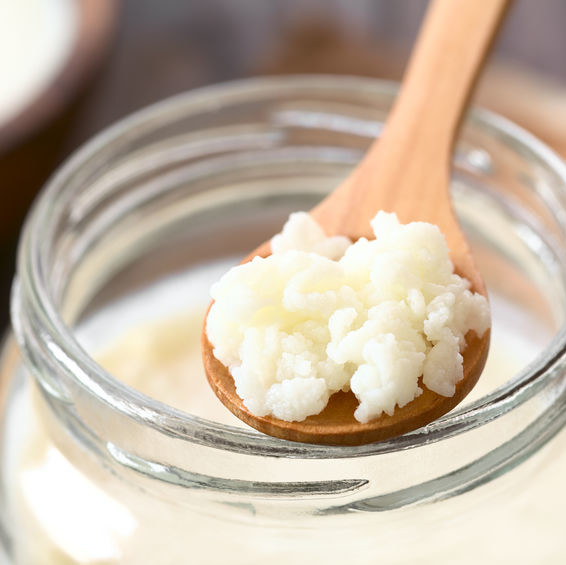Probiotics
What are Probiotics?
Probiotics are functional foods that have been defined by the FAO/WHO as “live microorganisms which when administered in adequate amounts confer a health benefit on the host.” To be effective, these living microorganisms must be capable of surviving the passage through the digestive tract, and can proliferate in the gut or digestive tract to provide health benefits to the host.
Microorganisms that can have probiotic benefits include:
- Bacteria: most effective ones belong to the genus Lactobacillus, Streptococcus, or Bifidobacterium
- Yeast: only Saccharomyces boulardii
Function
Probiotics perform the following functions:2
- Supplement nutrient deficiencies
- Lower cholesterol levels
- Correct the composition of the intestinal balance
- Reduce the impact of food intolerance and/or sensitivity
- Production of beneficial biomolecules such as B vitamins and some produce compounds which stimulate the immune system
- Reduce the incidence of diseases, such as colon cancer
Commercial production
The production of probiotics is initiated by the production of specific bacterial strains. After biomass propagation and downstream processing, the bacterial strain is inoculated into a saleable food product which can be easily consumed without further processing, e.g. frying or cooking.
The most commonly used probiotics are lactic acid bacteria (LAB), such as Lactobacillus acidophilus, Streptococcus sp., or Bifidobacterium sp., which are added to fermented milk products or are responsible for the fermentation of the dairy matrix itself.
Composition
Industrially available probiotics could be a single pure strain or a mixture of strains. Common probiotic bacteria include Lactobacillus acidophilus, L. rhamnosus, L. casei, Bifidobacterium lactis, etc. There is ongoing research on new strains which may be resistant to or highly viable in food processing/gut conditions.
Probiotics are often encapsulated in a suitable matrix to prevent loss of viability in the gastrointestinal tract. Encapsulated probiotics reach the intestine and populate the gut microbiota while being protected from the harsh conditions of enzymes and acidity in the stomach.
Nutrition
Benefits of probiotics are specific to the very strain from which the probiotic originates. One billion colony forming units, or CFU, is recommended per serving size. With 25-50 billion colony forming units per one gram of pure culture, reaching the suggested dose is easily met.
Application
Effective probiotic strains are expected to tolerate food manufacturing processes and most importantly survive the acidic conditions in the upper gastrointestinal tract.
In food products, it is essential to maintain a high enough number of viable cells which can last through the product’s specified date of expiry. This is why most food products containing probiotics have a rather short shelf-life (e.g. yogurt, sourdough bread, fruit juices, etc.).
Characteristics needed for microbial cultures to be considered as probiotic materials include the following:1
- The strain should be of the indigenous gastro-intestinal tract flora
- It must have the ability to resist acids and bile media, otherwise it will not survive the conditions of the upper gastrointestinal tract.
- The strain itself, its metabolic products, or cell components, must be inert so that they do not cause pathogenic, toxic, mutagenic or carcinogenic reactions to the human body
- It should be active against harmful (carcinogenic and pathogenic) microorganisms
- It must be genetically stable with no plasmid transfer mechanism
Probiotics and baked goods
Baked goods suppose an additional challenge to application of probiotics given the thermal step required for their production. Thermal steps which are intended to destroy microorganisms, both beneficial and pathogenic, include deep-fat frying, baking, and roasting. One option for the use of probiotics in baked goods may involve their injection as sweet or savory fillings to freshly baked and cooled bread. This way microbial cultures could be preserved within the food and become functional once consumed.
Probiotics vs Prebiotics
It is important not to confuse probiotics with prebiotics. The latter are non‐digestible food ingredients (mainly soluble and insoluble fibers) that form a matrix upon which beneficial microorganisms (probiotics) can flourish in the digestive tract, thus providing positive nutritional and overall health.
Regulation
In the US, products containing probiotics of selected microbial strains labelled as “generally recognized as safe” (GRAS) are normally classified into 3 groups:1
- Traditional foodstuffs: Non-dairy fermented food items in which active probiotic microorganisms have been incorporated such that the inoculated food products are consumed to provide nutritious health benefits.
- Supplements: Mainly fermented dairy products which deliver selected active probiotic microbes into the body, for example, specialized yogurts.
- Supplement formulations in capsules or tablets. In such cases, probiotics are usually distributed as a supplement in a lyophilized or stabilized form to maintain viable cells in a significant amount.
The FDA has not approved any health claims associated with probiotics intake. Manufacturers cannot use nutrient content claims either because a daily value has not been established yet.
Similarly in the EU, there are no approved health claims for probiotics.
References
- Msagati, T.A.M. “Probiotic Foods and Dietary Supplements”. Chemistry of Food Additives and Preservatives, John Wiley & Sons, Ltd., 2013, pp. 274–282.
- Aryee, A.N.A., and Boye, J.I. “Current and Emerging Trends in the Formulation and Manufacture of Nutraceuticals and Functional Food Products”. Nutraceutical and Functional Food Processing Technology, John Wiley & Sons, Ltd., 2015, pp. 1–63.


